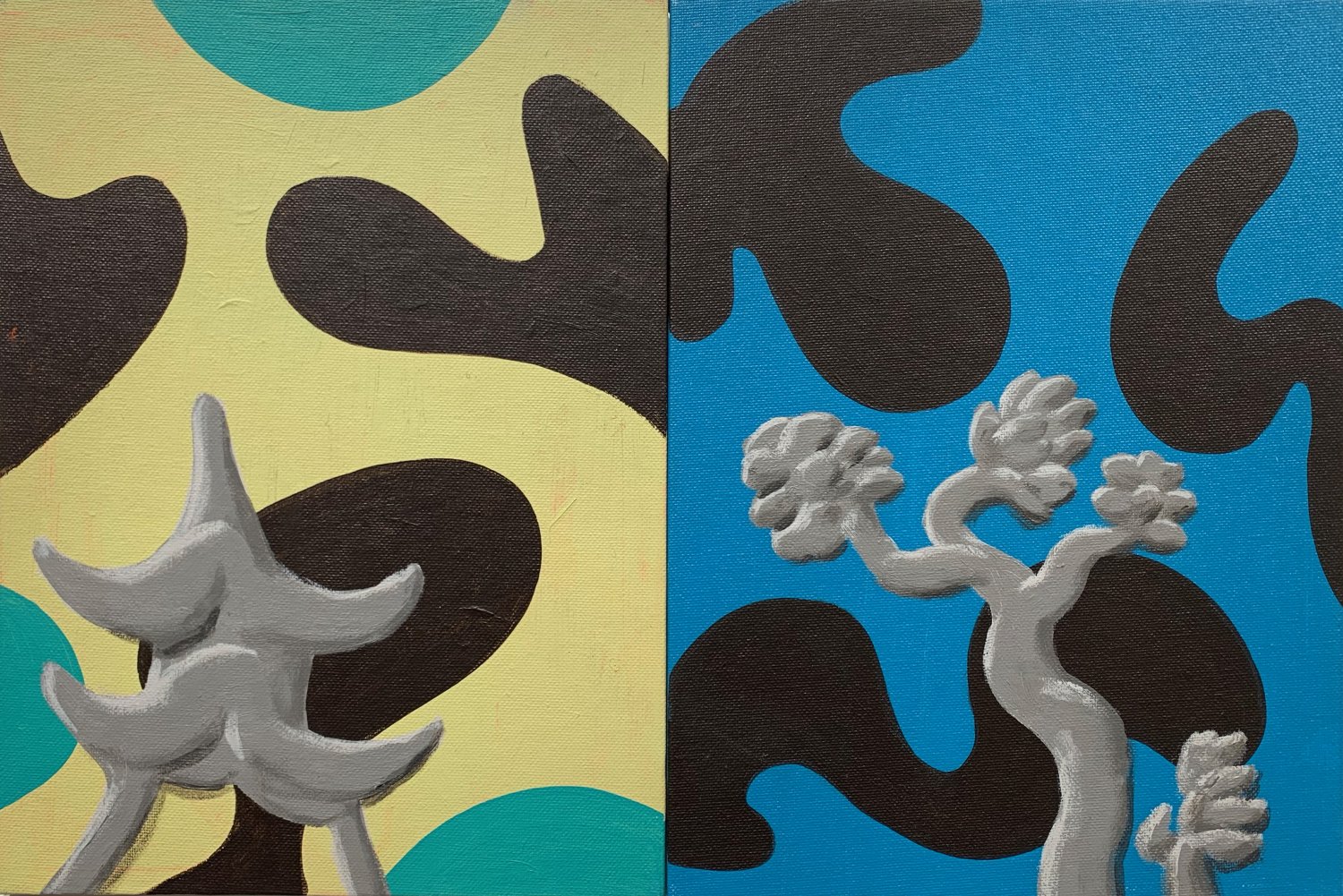Tony Clark
Chinoiserie Landscape, 1987-1993
oil on canvas panel
30.2 x 22.7 cm each panel (diptych)
signed, dated & inscribed with title ‘Chinoiserie/Landscape/1987-93/Tony Clark’ (on the reverse)
SOLD
Provenance
Roslyn Oxley9 Gallery, Sydney
Colin & Elizabeth Laverty collection, Sydney
"Most Chinoiserie works consist of painted renditions of small plasticine models Clark made after classical funerary buildings, often given a Chinese inflexion via upturned gables in the manner of pagoda architecture. These ropy little structures hover in front of the flattest of painted backgrounds; the globular, biomorphic shapes of tri-color military camouflage. Camouflage: the painted ornament that dissimulates objects by taking on a look of generalised vegetal form and colour....
Camouflage has a visual variegation that, when (mis)matched with Clarke's Pagoda Temple images, kept the Chinoiserie Landscapes in the realm of the isolated easel picture. True decoration needs sameness to expand out over architectural surfaces." (Roger Benjamin, "Tony Clark - Mysteries of the Villa Sino-Romana", Art and Text, No.44, 1993, p.40)
After first exhibiting the series in the late 1980s, Clark has since revisited this theme with new variations on the theme exhibited in Chinoiserie Landscape 1987-2017, Murray White Room, Melbourne (2018).

In a career that has traversed landscape and abstract painting, Tony Clark is one of Australia's leading conceptual artists, renowned for his decades-long series that examine popular cultural phenomena through history. Wayne Tunnicliffe, head of Australian Art at the Art Gallery of New South Wales, has written of Clark's work "Pop, classicism and conceptual art have converged to provide an echo-chamber where each strand could comment on the other".
Born in Canberra in 1954, Tony Clark currently lives and works in Sicily, Italy and Essen, Germany. Raised in London and Rome, and after formative years in Melbourne’s experimental art and music scenes with the likes of Nick Cave and Howard Arkley, Clark studied art history but was a self-taught painter. A self-defined “punk classicist”, for over four decades Clark has sought to challenge conventional art historical narratives and with large-scale compositions of explosive colour and archetypal forms. Prominent series have included his “sacro-idyllic” landscapes of the early 1980s, drawn from the ruins of Pompeii and Herculaneum, his Chinoiserie series (since 1987) in which he made plasticine miniatures of pagodas and painted them with bold, expressive backgrounds, and his Myriorama series (since 1985) in which he has created hundreds of landscape panels that can be arranged and interchanged freely, just like the Victorian children's game of the same title.
Tony Clark has exhibited for four decades and features in major public and private collections in Australia and abroad. A major retrospective, Tony Clark – Public and Private Paintings 1982-1998, was held at the Heide Museum of Modern Art, 1998. Clark also featured in the prestigious dOCUMENTA IX, Kassel, Germany (1992).